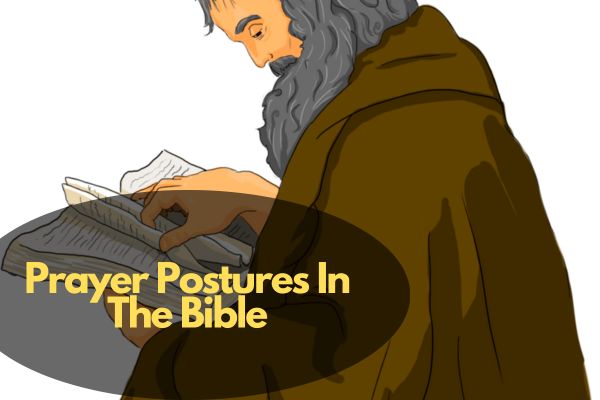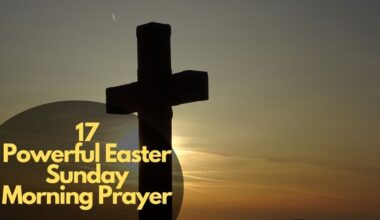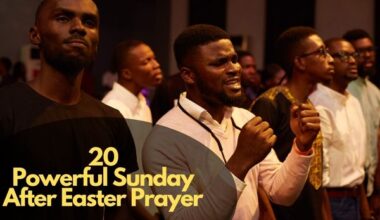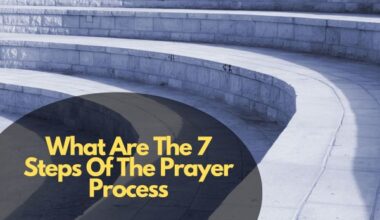Table of Contents Show
In the vast tapestry of the Bible, prayer postures serve as profound expressions of faith and devotion. Delving into the scriptures, one finds a rich mosaic of postures, each imbued with deep spiritual significance.
Unlock the spiritual significance of Prayer Postures In The Bible. Explore various prayer positions, their meanings, and historical contexts. Dive deep into this divine connection.
Prayer Postures In The Bible
Prayer Postures In The Bible offer a profound glimpse into the spiritual practices of ancient believers. This article explains the intricate details of these postures, shedding light on their meanings, significance, and the divine connection they establish. Embark on a journey through time and faith, understanding the essence of Prayer Postures In The Bible.
Understanding the 5 Prayer Postures In The Bible
1. Kneeling: A Sign of Submission
Philippians 2:10-11 (NIV): “That at the name of Jesus, every knee should bow, in heaven and on earth and under the earth, and every tongue acknowledge that Jesus Christ is Lord, to the glory of God the Father.” Kneeling in prayer signifies submission and reverence. As demonstrated in the above verse, bowing our knees in prayer acknowledges the supreme authority of Jesus Christ, reinforcing our humility before God.
2. Standing: Confidence in Faith
1 Corinthians 16:13 (NIV): “Be on your guard; stand firm in the faith; be courageous; be strong.” Standing in prayer represents unwavering faith and confidence. This posture, supported by the verse above, symbolizes our readiness to face challenges with courage and strength, rooted in our faith in God.
3. Prostration: Complete Surrender
Psalm 95:6 (NIV): “Come, let us bow down in worship, let us kneel before the Lord our Maker.” Prostration involves fully bowing down, signifying complete surrender to God. As depicted in this verse, prostrating before the Lord is an act of worship, demonstrating our dependence on Him as our Creator.
4. Sitting: Reflective Meditation
Psalm 46:10 (NIV): “He says, ‘Be still, and know that I am God; I will be exalted among the nations, I will be exalted in the earth.'” Sitting postures in prayer encourage contemplation and meditation. By being still before God, as stated in this verse, we open our hearts to His presence, allowing His wisdom to guide our thoughts and reflections.
5. Lifting Hands: Supplication and Trust
Psalm 28:2 (NIV): “Hear my cry for mercy as I call to you for help, as I lift up my hands toward your Most Holy Place.” Lifting hands in prayer signifies supplication and trust. The act of raising our hands, as described in this verse, represents our earnest cries for God’s mercy and assistance, showcasing our unwavering trust in His divine intervention.
Frequently Asked Questions (FAQs)
What is the biblical basis for kneeling in prayer?
Kneeling finds its roots in the acknowledgment of Jesus Christ’s supreme authority, as stated in Philippians 2:10-11. It symbolizes submission and deep respect for the divine presence, allowing believers to express their unwavering faith.
How does sitting in prayer enhance meditation?
Sitting postures, as exemplified in Psalm 46:10, encourage reflective meditation. By being still before God, believers create a conducive environment for contemplation, allowing them to connect deeply with His teachings and insights.
Is there a specific posture mentioned for prayer in the Bible?
While various postures are mentioned, the Bible emphasizes the sincerity of one’s heart rather than a specific physical posture. The essence of prayer lies in genuine faith, humility, and a deep connection with God, regardless of the position.
How can one incorporate prayer postures into their daily spiritual practice?
Believers can incorporate prayer postures into their daily spiritual practice by choosing postures that resonate with their faith and intentions. It’s essential to approach prayer with sincerity, humility, and a genuine desire to connect with the divine.
Conclusion
In the tapestry of faith, Prayer Postures In The Bible offer believers a profound way to connect with the Almighty. Whether kneeling, standing, prostrating, sitting, or lifting hands, each posture carries unique symbolism, enriching the spiritual journey.
Each posture, whether kneeling, standing, prostration, sitting, or lifting hands, offers a unique channel to communicate with the divine. By understanding and embracing these postures, believers can deepen their spiritual journey, fostering a profound connection with the Almighty. Embrace these prayer postures with sincerity and devotion, forging a deep and meaningful connection with the divine.








